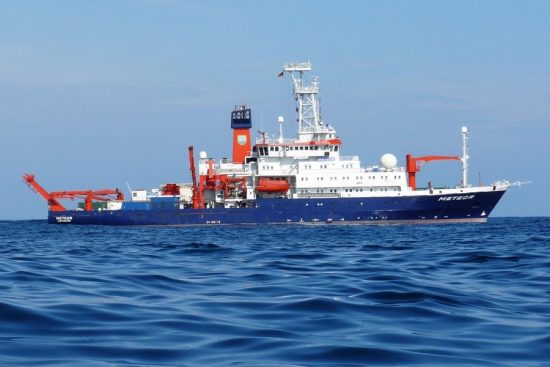




In January and February 2013, a subsurface anticyclonic
eddy formed in the Peru-Chile Undercurrent, allowing researchers to document
the creation of such an anomaly for the first time.
Using seven autonomous robotic gliders, researchers took
recordings of the newly-formed eddy, which measured nearly 100 kilometres
across. Such eddies are essential for the transport of oxygen, nutrients and
heat throughout the oceans.
The Gulf Stream and the Agulhas Current are not the only
currents found in the oceans; there are also countless eddies. These eddies are
constantly on the move, can measure up to 300 kilometres in diameter, and last
up to five years. There are different ways an eddy may be formed, with long-lasting
examples first forming on the eastern boundaries of the oceans before moving
westward. Because they form over a span of just a few weeks, they are difficult
to predict, making a direct observation difficult to arrange.
In 2013, researchers from the GEOMAR Helmholtz Centre for
Ocean Research Kiel, of the Alfred Wegener Institute Helmholtz Centre for Polar
and Marine Research in Bremerhaven (AWI) and the Max Planck Institute for
Marine Microbiology in Bremen had an opportunity to document the formation of
an eddy off the Peruvian coast for the first time. Their findings have been
published in the international Journal of Geophysical Research: Oceans.
The eddy had formed in precisely the same region where
researchers had deployed seven robotic gliders from the German research vessel Meteor.
The 1.5 metre long gliders functioned like underwater sailplanes. They
manoeuvred back and forth at about 1,000 metres depth, by means of small wings
and a sophisticated trim in a forward motion.
The gliders recorded more than 10,000 profiles of
temperature, salinity, oxygen and chlorophyll as the eddy formed. Such data
allowed the researchers to study the eddy's impact on the salt, oxygen and
nutrient distribution in greater detail than would have been possible from
ship-based measurements.
Oceanographer and co-author Prof Dr Torsten Kanzow from
AWI explained that using satellite communication, they received the data from
the gliders in real time and were thus able to adjust the cruise schedule to
optimise the sampling strategy.
Describing the main findings of the study, lead author Sören Thomsen from
GEOMAR explained that the data showed that the water inside the eddy's core
originated from the bottom layers of the continental slope. The waters from
this location possess properties that are different from the waters in the open
ocean.
“The coastal areas are biologically very productive. As a
result, many plants and animals die there too. They sink to the bottom and are
decomposed by bacteria. Of course, these biogeochemical processes affect the
characteristics of the bottom waters,” said co-author Dr Marcus Dengler from
GEOMAR.
After the eddy draws in water from the continental slope,
it sends it westward to the open Pacific Ocean. Throughout this process, there
is almost no exchange between the eddy and the surrounding waters, so the
differences in the properties are maintained. According to Dr Dengler, their
research showed that a large part of the eddy's anomalous properties originated
from the region where the eddy was formed.
As the eddy transports water masses away from the
Peruvian continental margin, it creates space for nutrient-richer water to
ascend from the depths. Hence, the eddy plays a crucial role in the maintenance
of the high biological productivity of the Peruvian coast.
“This is highly relevant for the people. After all,
fishing is an important economic factor in the region,” said Thomsen.
 Mares
Mares 30th January 2016
30th January 2016 Perù
Perù